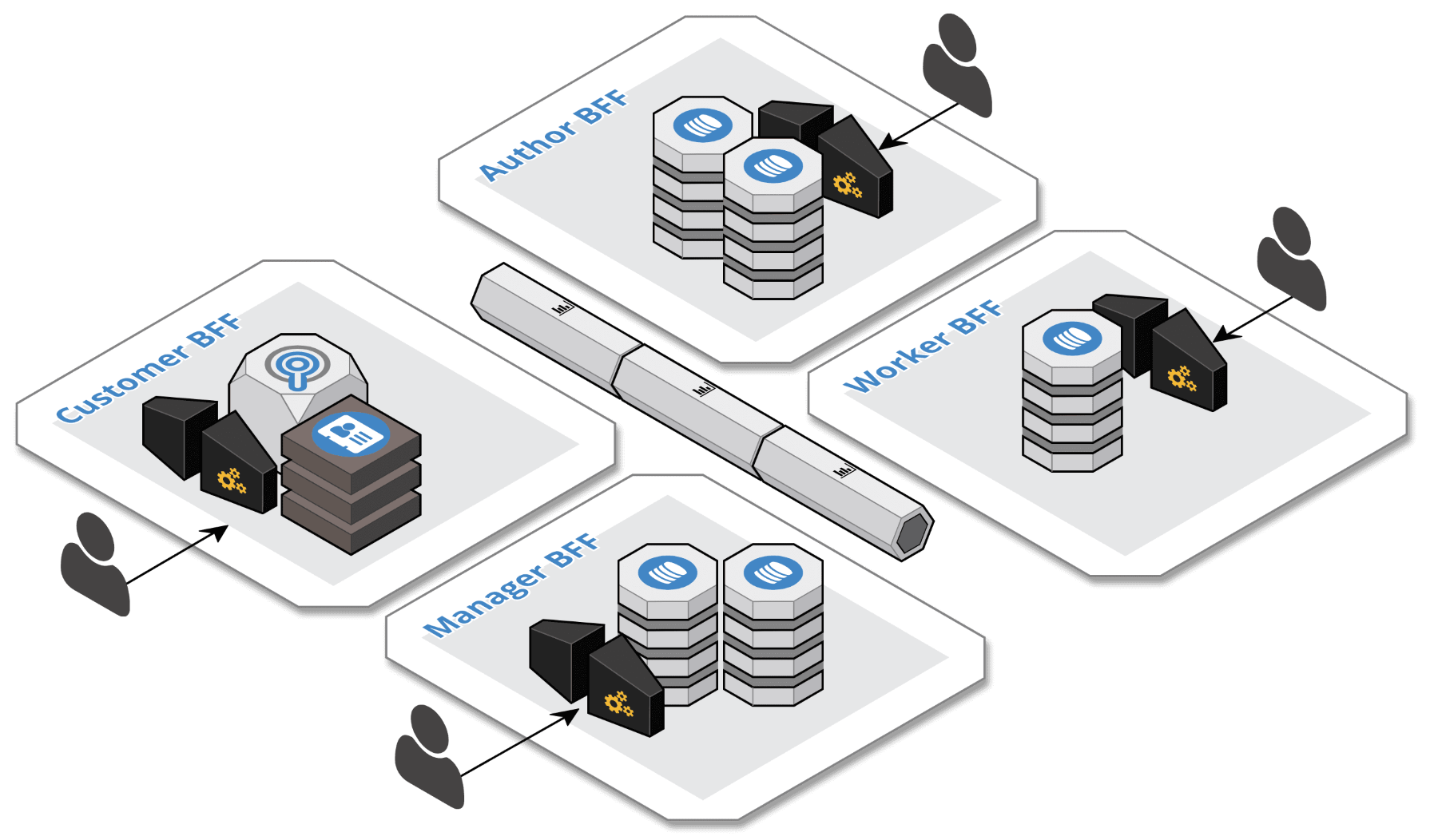Create dedicated and self-sufficient backend components to support the features of user-focused frontend applications.

Cloud-native, Reactive systems are composed of bounded isolated components, which provide proper bulkheads to enable the components to be responsive, resilient, and elastic. All inter-component communication is accomplished via asynchronous event streaming and components leverage materialized views to cache upstream data locally. To increase availability for an increasingly mobile user base, we leverage an offline-first database to store data on devices and synchronize with the cloud. The boundary components leverage an API gateway to expose a synchronous interface, which is used to interact with a user interface. Cloud-native systems typically have multiple user bases with different user experiences, delivered over multiple channels and to multiple device types.
Our overarching objective with cloud-native is to empower self...



